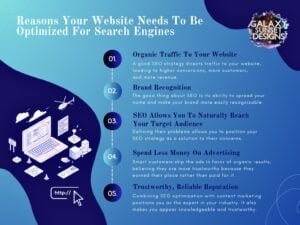Tracking Visitors On Your Website
In today’s digital world, data and insights into your website’s performance are essential to success. Website tracking tools help businesses make data-driven decisions by analyzing visitor behavior and identifying improvement opportunities. Thankfully, a wide range of powerful analytics and tracking tools exist to help you better understand your users and elevate your website. From veteran platforms like Google Analytics to visual heatmap tools, these technologies provide valuable information to guide your optimization efforts.
Google Analytics: Understanding Your Audience
Google Analytics is a powerful tool for tracking website performance and understanding user behavior. It remains a front runner in website analysis, offering in-depth details about your traffic, conversions, audience demographics, and more. This free platform enables you to set goals to gauge success and make data-driven decisions to improve user experience. Simply put, Google Analytics gives you the insights you need to better understand your users and refine your website over time. You can gain insights into traffic sources, user demographics, and engagement metrics to optimize your website.
With over 20 billion pages tracked per month, Google Analytics has become ubiquitous in the world of digital analytics, offering website owners an astounding breadth and depth of data. As a free platform, it presents an extremely low barrier to gaining actionable and timely insights into your website traffic and visitors.
In essence, Google Analytics places the power of data in your hands – enabling smarter optimization, user-focused design choices, and data-driven marketing. With Google Analytics as your guide, you’ll have insights to propel your website to the next level.
Key Features:
Traffic Analysis: Understand where your visitors are coming from – be it search engines, social media, or direct visits.
User Behavior: Gain insights into how users interact with your site, including pages visited, time spent, and navigation paths.
Conversion Tracking: Set up goals to monitor actions like sign-ups, purchases, or downloads, enabling you to measure the effectiveness of your marketing efforts.
Integration Capabilities: Seamlessly connect with other Google services like Google Ads and Search Console for a comprehensive view of your digital strategy.
Website Tracking Tools: Beyond the Basics
While Google Analytics offers a wealth of information, additional website tracking tools can provide deeper insights into specific areas:
Heatmaps: Visual representations of user interactions, showing where visitors click, scroll, and hover. This data helps optimize page layouts and improve user engagement.
Session Recordings: Watch real-time recordings of user sessions to identify usability issues and understand user behavior on a granular level.
A/B Testing Tools: Experiment with different versions of a webpage to determine which performs better, facilitating data-driven design decisions.
Track Website Traffic Sources and Volume Analyze exactly where your visitors originate from – search engines, referring sites, direct access etc. Measure total user sessions, unique visitors, and other metrics to quantify your overall traffic.
Go beyond the topline numbers to see exactly how visitors navigate your site. Monitor pages per session, bounce rates, exit pages and more to improve user experience.
Define micro and macro website conversions like email signups, content downloads, purchases etc. Set targets and benchmarks to continually optimize pages to boost these conversions.
Leverage Google Analytics audience reporting to segment users by age, gender, interests and more. Tailor site content and messaging to resonate with your core constituencies.
Connect Analytics with other Google products to measure ROI of online campaigns, analyze organic visibility and much more. Obtain a holistic view of your digital presence.
Monitoring Search Performance with Google Search Console
Complementing Google Analytics, Google Search Console keeps watch over your site’s presence in Google search listings. It delivers vital data on queries, indexing status, and alerts you to issues impacting visibility. With these insights in hand, you can optimize content to boost your search rankings and troubleshoot problems early on. Maintaining strong search visibility is essential, and Google Search Console is your trusted ally in that effort.
Google Search Console provides website owners with invaluable data to monitor and maintain strong search visibility. By tracking search query and click data, site owners can see exactly which terms are directing the most users to their pages and optimize content accordingly. The console also diagnoses critical crawl errors and indexing issues – identifying broken links, surfaced content problems, or pages Google cannot fully access.
As fast, mobile-friendly sites achieve better rankings, Search Console runs page speed and mobile friendliness tests, alerting site owners to areas needing performance improvements or responsiveness fixes. Additionally, the console enables manual indexing requests to promptly include new content in search results as well as reports unauthorized links and favicon display issues. With all these diagnostics and data at your fingertips, site owners can hold search visibility by continuously optimizing content and site architecture based on actionable Google Search Console feedback.

Your Site Needs Privacy and Cookies Policies
Stay in Compliance with Data protection laws. The EU’s GDPR require sites that use tracking technologies to disclose their information collection practices. Comprehensive cookie and privacy policies help meet legal compliance around disclosing your use of analytics tools, ads, and more. Transparency for visitors is important as it outlines what data your site gathers and why builds trust with visitors. Detailed policies demonstrate respect for privacy and give users more control by allowing them to opt-out if desired. Transparency is key and listing what analytics platforms you leverage assures visitors that tracking is first-party only and not shared externally. This provides peace of mind that data use is limited to technical, marketing, and experience optimization.
Data Security Information and adding specifics on data encryption, anonymity, access limitation, retention and other security details show users their information is handled carefully as per industry best practices. Clear policies also represent website best practices to search engines, improving perceptions of ethics and integrity. This can lend positive signals for search rankings and visibility.
Cookie and privacy policies not only meet legal requirements but build visitor confidence in how their data will be collected and secured. Prioritizing these policies is a mark of an accountable, transparent website in the eyes of users, regulators and search engines alike.
Our Final thoughts
Regularly analyzing your website’s tracking data unlocks invaluable direction for optimization, superior UX, and strategic marketing choices. With the right tools providing actionable inputs, you can confidently guide your site to stand out digitally. While leveraging these technologies, also prioritize transparency through accessible privacy and cookie policies. Ultimately, analytics and tracking tools serve as indispensable navigational charts for digital success.
Share This Article On Social Media
Galaxy Sunset Designs is here to help small businesses take their brand to the next level! We want people to stay informed and receive quality information from a reputable source. Share with anyone you think needs to read this!





